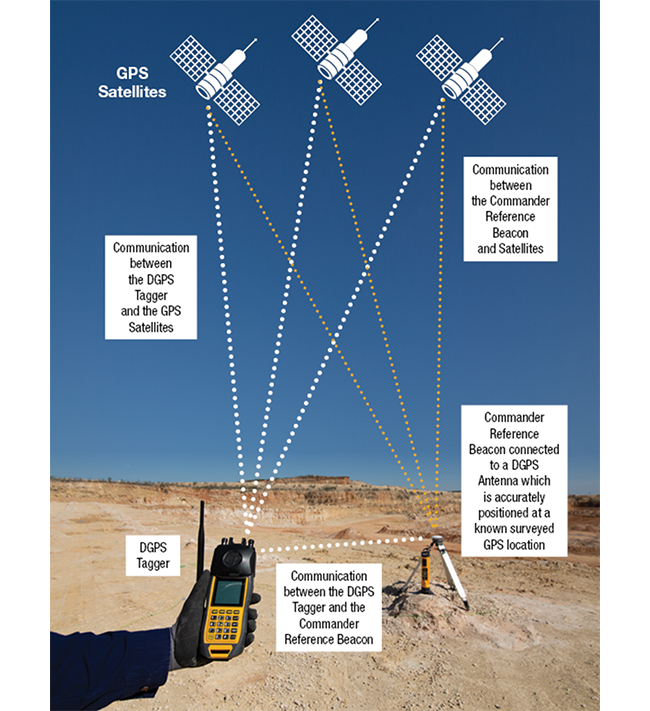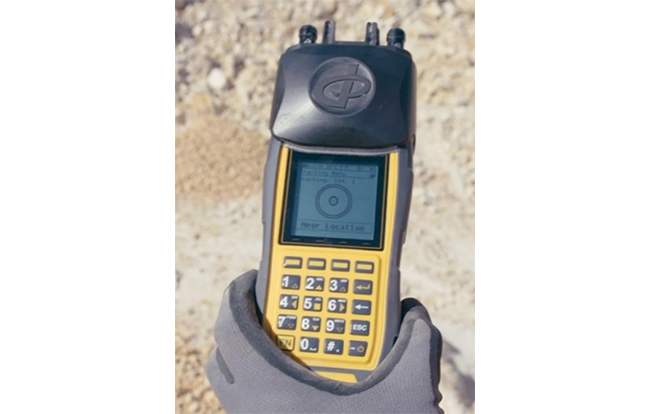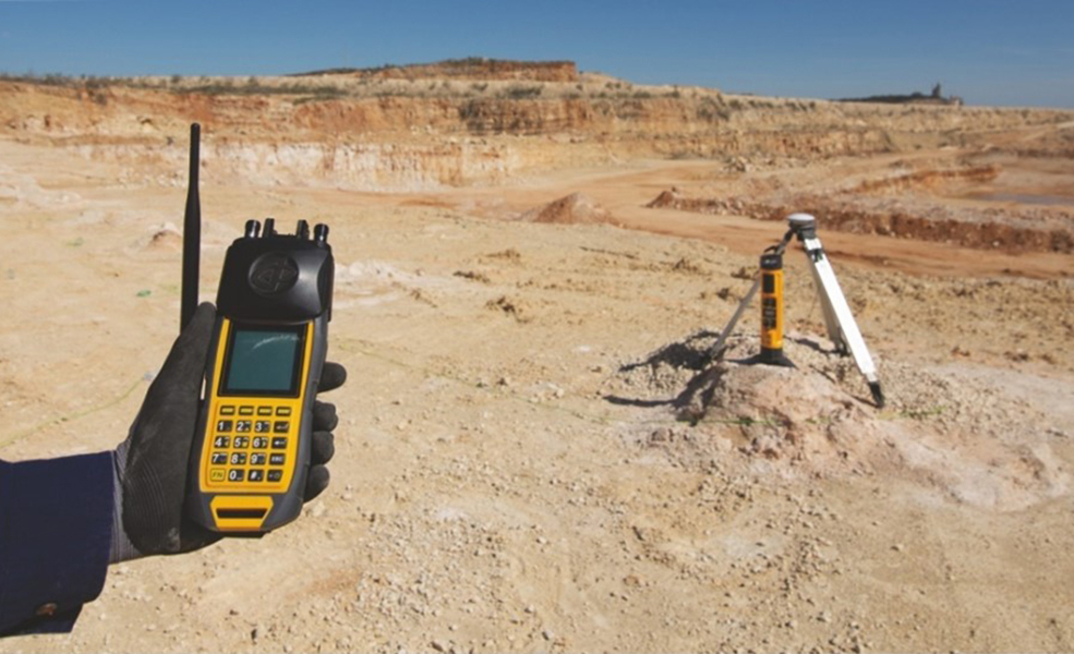The size of blasts in mining can range from just a few blastholes, up to the latest world record for the largest electronic blast held by Dyno Nobel, which saw the safe firing of more than 12,500 detonators across 3,860 blastholes in 2020.
The typical loading process for blasts comprising electronic detonators requires drilling, blasthole QC and marking, priming, charging and tagging. This process can take anywhere from a couple of hours to weeks involving numerous personnel. Customers across the mining industry experience common issues when tagging detonators:
- Tagging is time intensive and requires personnel to visit each blasthole multiple times during the blast preparation process.
- This process is prone to human error with incorrectly marked blastholes or out of sequence connection of detonators resulting in incorrect delay assignment.
- Operational delays due to the difficulty in identifying the location of a mis-tagged hole or a problematic hole when fault finding on the bench, especially when there are no identifying markings on blastholes.
Incorrect timing may compromise fragmentation, impact loading efficiency, result in misfires and impact overall productivity due to troubleshooting delays.
Bringing autonomy to the blasthole tagging process will assist in maximising efficiency by eliminating the potential for human error on the bench and ensuring integrity of drill and blast operations. The ability to automatically detect blasthole location is a solution to the root of the problem. The key is precision.
Standard GPS provides a position of an object on earth using signals generated by satellites circling the earth. This GPS method uses standalone receivers where the location is directly calculated but is prone to inaccuracies due to orbit and multi path errors. As a result, GPS can achieve a nominal accuracy of 10-15 metres. This level of precision falls below the accuracy required to correctly identify individual blastholes, with spacing and burden values generally below 10 metres.

The addition of Dyno Nobel's Differential GPS (DGPS) technology to its already proven DigiShot® Plus.4G electronic initiation system, brings the industry a step closer to autonomous blasthole identification and loading. This technology pairs high precision DGPS capability with the DigiShot Plus.4G tagger and CE4 Commandertm system, to deliver an enhanced spatial positioning accuracy of less than one metre.
DGPS is a vast improvement on standard GPS. It reduces or eliminates the errors, resulting in improved accuracy. DGPS accuracy is achieved by using a DGPS enabled CE4 Commander as a reference receiver at a known surveyed location. The DGPS station then broadcasts correction data to the taggers, providing sub one-metre accuracy for accurate blasthole identification and tagging.
Vice President Initiating Systems Technology, Dirk Van Soelen says, "All of our technology in the initiation systems pipeline starts with solving our customers' biggest challenges, from the downline wire and detonator, to the fully integrated system. Our DGPS technology is no exception. We have developed an innovative product with the potential to eliminate human error, while speeding up the overall detonator tagging process. This translates to clear efficiencies, labour cost savings and a leap towards future blasting automation. Dyno Nobel now has a very powerful initiation system incorporating DGPS which addresses a time intensive and sometimes error prone part of the blasting process. A number of trials with iron ore and hard rock customers have been conducted at sites in Australia over the past 18 months. To date, the trials have been successful in demonstrating clear potential for improving blast implementation and reducing overall costs."
The planning, design and simulation of the blast timing sequence is completed in ViewShot® 3D, Dyno Nobel's blast software package. GPS collar location coordinates from the drills are imported into ViewShot 3D. The blast design timing sequence is simulated and optimised using the timing design tools to achieve the desired outcomes. The blast plan and timing sequence is then downloaded onto the DGPS tagger, ready for tagging.

On the bench, the DGPS enabled CE4 Tagger automatically identifies the blasthole based on the location using the GPS coordinate from ViewShot 3D and correction data from the CE4 Commander. Correct delay and location data are then assigned to the detonator, per the blast design, by the CE4 Tagger.
DGPS uses real time graphical deployment data which allows the user to uniquely identify a blasthole. Auto Hole Detection eliminates the potential for human error during the tagging process by removing any guess work. Improved loading efficiency is achieved by removing the need to follow a specific path during tagging. Blasthole detection also offers greater control over the blast plan and improves efficiency when troubleshooting.
For sites with drill rigs that are not equipped with GPS logging, the DGPS Tagger can be used to accurately log blasthole positions. The accurate collar positions can then be imported into ViewShot 3D to assist in optimising blast timing which can help achieve better blast outcomes. An additional benefit from this approach is the improvement of drilling QA/QC.
Technical Specialist, Nico Swart said, "During the first introduction of our DGPS technology at a customer's site, a section of the blasthole numbers were identified to be out of sequence."
"In subsequent trials at other sites, more incorrectly marked blastholes were identified; especially when on contour patterns that generally have no or few identifying markers."
"The ability to uniquely identify blastholes when there are no visual cues reduces the potential for time-consuming error correction at a later stage, especially in the crucial period while preparing to initiate a blast."
"So far, we've seen promising results, with the simplicity of the transition to using the DGPS technology with our existing DigiShot Plus.4G system requiring minimal training."
Dyno Nobel's Differential GPS technology is a solution that facilitates faster blast deployment, greater accuracy and increased efficiency, with the potential to eliminate human error. Whilst currently semi-autonomous, this technology is designed to translate into fully autonomous (robotic) deployment and tagging in the future.
The DigiShot Plus.4G electronic initiation system enhanced with Differential GPS is another Practical Innovation from Dyno Nobel, ready and available today.
ABOUT THIS COMPANY
Dyno Nobel Asia Pacific Pty Limited
Dyno Nobel is a global leader in the commercial explosives industry with more than 3,770 employees. We manufacture over 54 million pounds of packaged explosives and more than 1.2 million tons of ammonium nitrate capacity. We have 32 manufacturing facilities on three continents and our Engineering and Technology team supports product sales, as well as the use of our cutting-edge technologies around the world. Dyno Nobel is the Practical Innovator, the Industry Expert and a Committed Partner.
OFFICES:
Brisbane:
- 282 Paringa Road, Gibson Island, Murarrie, Brisbane QLD 4172, Australia
- Phone: +61 7 3026 3900
Perth:
- Level 2, Suite 3, 233 Adelaide Terrace, Perth WA 6000, Australia
- Phone: +61 8 6188 3000
Website:


























